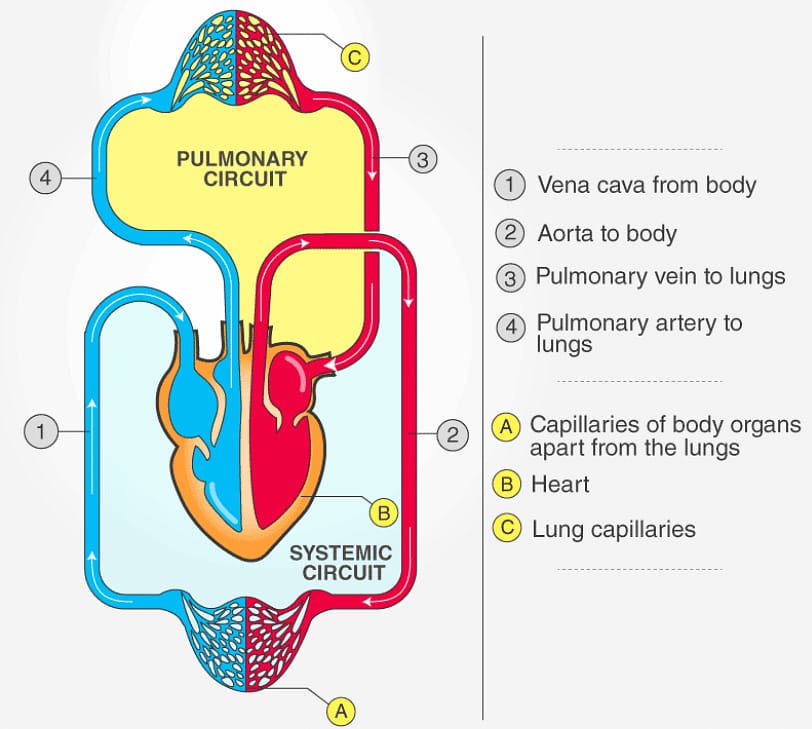MCQ ON ELECTROCARDIOGRAPH AND REGULATION OF CARDIAC ACTIVITY class 11 for NEET | ELECTROCARDIOGRAPH AND REGULATION OF CARDIAC ACTIVITY class 11| MCQ ELECTROCARDIOGRAPH AND REGULATION OF CARDIAC ACTIVITY with Answer | Check the below NCERT MCQ question for class 11Biology based on the with Answers.
MCQ on ELECTROCARDIOGRAPH AND REGULATION OF CARDIAC ACTIVITY class 11Biology with answers were prepared based on the latest pattern. We have provided class 11 Biology MCQs question with Answers to help students understand the concept very well.

MCQ ON ELECTROCARDIOGRAPH AND REGULATION OF CARDIAC ACTIVITY class 11 for NEET
MCQ ON ELECTROCARDIOGRAPH AND REGULATION OF CARDIAC ACTIVITY is useful for NEET / CSIR / UGC / CBSE / ICSE / AIIMS / EXAM / AFMC EXAM / STATE LEVEL MEDICAL EXAM/ KVS PGT BIOLOGY / NVS PGT BIOLOGY EXAM 2023-2024 ,2025
INTRODUCTION:-
ELECTROCARDIOGRAPH :-
ECG is a graphical representation of the electrical activity of the heart during a cardiac cycle.
Each peak in the ECG is identified with a letter from P to T that correspondence to specific electrical activity of the heart.
The P wave represents the electrical depolarisation of atria.
The QRS complex represents the polarization of the ventricles.
The T wave represents repolarisation.
REGULATION OF CARDIAC ACTIVITY :-
Normal activity of the heart are regulated intrinsically by specialised muscles nodal tissues hence the heart is called myogenic.
DISORDERS OF CIRCULATORY SYSTEM:-
HIGH BLOOD PRESSURES’-
Hypertension is the term for blood pressure that is higher than 120 by 80 in this measurement 120 millimetre Hg millimetres of Mercury pressure is the systolic pressure or pumping pressure and 80 mm mercury is the diastolic or resting pressure.
If repeated checks of blood pressure of an individual is 140 by 90 or 140 over 90 or higher its shows hypertension. High blood pressure leads to heart diseases and also affects vital organs like brain and kidney.
.
CORONARY ARTERY DISEASE (CAD):-
Coronary artery disease often referred to as atherosclerosis , affects the vessel that supply blood to the heart muscle.
It is caused by deposits of calcium , fats , cholesterol and fibrous tissues which makes the lumen of arteries narrower.
ANGINA:-
It is also called eangina pictorist.A symptom of acute chest pain appears when no oxygen is reaching the heart muscle.
Angina can occur in men and women of any age but it is more common among the middle aged and elderly.
It across due to conditions that affect the blood flow.
MCQ ELECTROCARDIOGRAPH and REGULATION OF CARDIAC ACTIVITY class 11 for NEET/KVS PGT BIOLOGY / NVS PGT BIOLOGY EXAM 2023-2024,2025
1. It is a graphical representation of the electrical activity of the heart during a cardiac cycle.
(a) ECG
(b) EEG
(c) SAN
(d) AV node
Ans (a) ECG
2. To obtain a standard ECG a pattern is connected to the machine electrical leads…
(a) one to each wrist
(b) to the left ankle.
(c) both a and b
(d) EEG
Ans. (c) both a and b
3. Each peak in the ECG is identified with a letter from ……to ……that corresponds to a specific electrical activity of the heart.
(a) P to Q
(b) P to T
(c) P to R
(d) P to M
Ans. (b) P to T
4. The P wave represents
(a) electrical excitation or depolarization of the atria
(b) Depolarisation of ventricles
(c) Repolarisation
(d) all the above
Ans.(a) electrical excitation or depolarization of the atria.
5. The P wave leads to
(a) contraction of the both the atria
(b) contraction of the both ventricle
(c) contraction of ventricles
(d) all the above
Ans.(a) contraction of both the atria
6.The QRS complex initiates the
(a) contraction of atrium
(b) Depolarisation of the ventricles
(c) ventricular contraction
(d) all the above
Ans.(c) ventricular contraction
7. The QRS complex represents
(a) Depolarisation of the ventricles
(b) Repolarisation of the atria
(c) end of systole
(d) all the above
Ans.(a) Depolarisation of the ventricles
8.The QRS complex represents the Depolarisation of the ventricles which initiats the ventricular contraction.The contraction starts shortly after Q and marks the
(a) begining of systole
(b) end of systole
(c) ventricular contraction
(d) all the above
Ans.(a) beginning of the systole.
9. Which wave represents return of the ventricles from excited to normal state re polarisation?
(a) T – wave
(b) P – wave
(c) QRS – wave
(d) all the above
Ans. (a) T – wave
10. The end of the T – wave marks the
(a) beginning of the systole
(b) end of the systole
(c) both a and b
(d) Depolarisation of the ventricles
Ans. (b) end of the systole.
11. By counting the number of which wave that occur in a given time period one can determine the heartbeat rate of an individual?
(a) P – wave
(b) QRS- wave
(c) T – wave
(d) all the above
Ans.(b) QRS – wave
12. Normal activity of the heart are regulated intrinsically auto regulated by specialized muscles nodal tissues hence the heart is called
a) neurogenic
b) myogenic
c) both a and b
(d) none of the above
Ans . (b) myogenic
13.A special neural center in the medulla oblongata can moderate the cardiac function through
(a) CNS
(b) ANS
(c) PNS
(d) all the above
Ans.(b) ANS
14. Neural signals through the sympathetic nerves part of ANS can
(a) increase the rate of heart beat.
(b) decrease the rate of heart beat
(c) both a and b
(d) systolic pressure
Ans. (a) increase the rate of heart beat
15. Adrenal medullary hormones can
ALSO READ:-
● YOU CAN WATCH BIOLOGY SIR Youtube channel
(a) increase the cardiac output
(b) decrease the cardiac output
(c) both a and b
(d) emphysema
Ans.(a) increase the cardiac output
16. Sympathetic and para sympathetic nerve system is part of
(a) CNS
(b) PNS
(c) ANS
(d) all the above
Ans.(c) ANS







Leave a Comment